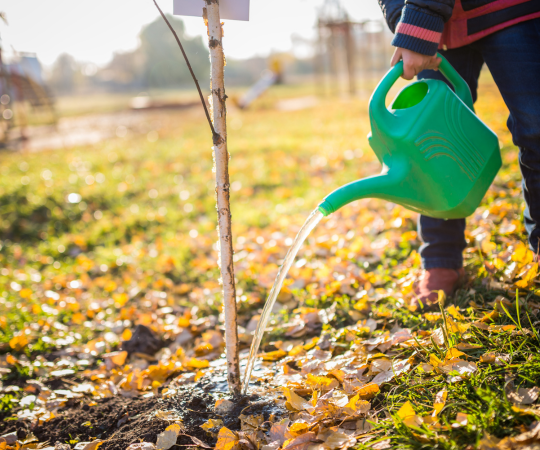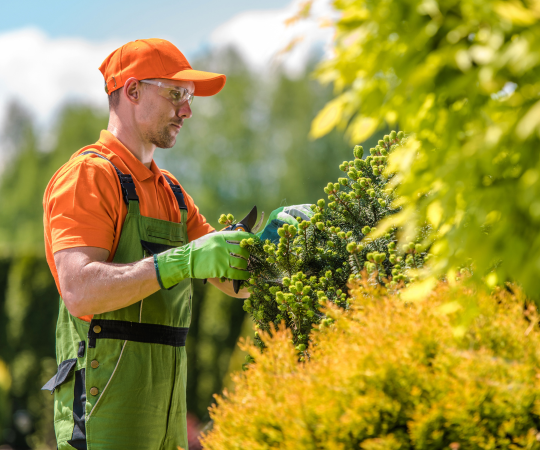Mastering Tree Care Basics: How to Ensure the Health and Beauty of Your Trees
Properly caring for trees requires a solid understanding of the basics. First and foremost, trees require regular tree maintenance to thrive. Regular pruning helps shape the tree, remove dead or diseased branches, and promote healthy growth. Additionally, different tree species have specific needs that must be met to ensure their well-being. Some trees prefer well-drained soil, while others thrive in moist environments. Understanding these requirements is crucial for providing appropriate care. Moreover, weather conditions greatly impact tree health. Extreme temperatures, drought, storms, and strong winds can all pose challenges. By recognizing and mitigating the effects of weather on trees, we can protect their health and longevity.
Assessing Tree Health
Assessing the health of trees is essential to identify and address any potential issues promptly. It begins with recognizing common tree health issues such as nutrient deficiencies, fungal infections, or pest infestations. Regular visual inspections play a key role in this process, allowing us to observe the overall condition of the tree, the appearance of leaves and branches, and any signs of stress. It is equally important to be able to recognize signs of disease, pests, and decay, such as discolored leaves, wilting, bark damage, or the presence of pests. By being vigilant and proactive in assessing tree health, we can take appropriate measures to ensure their well-being.
Tree Pruning Techniques
Pruning is a fundamental aspect of tree care that offers numerous benefits to the health and appearance of trees. First and foremost, pruning promotes proper tree structure, removing dead, damaged, or diseased branches that can pose safety hazards. It also improves air circulation and sunlight penetration, reducing the risk of fungal infections and promoting overall tree health. Pruning can enhance the tree’s aesthetic appeal by shaping it, encouraging a balanced canopy, and maintaining a desirable size.
To ensure effective pruning, it is crucial to employ proper methods and tools. Tools such as hand pruners, loppers, and pruning saws should be clean, sharp, and appropriate for the branch size. Proper techniques, such as making clean cuts just outside the branch collar, minimize damage and promote healing. Different tree types have specific pruning requirements, and the timing of pruning varies. While some trees are best pruned during the dormant season, others may require pruning after flowering. Understanding the specific needs of different tree species ensures optimal results and minimizes the risk of negative impacts on tree health.

Watering and Soil Management
Proper watering and soil management are essential for maintaining the health and vitality of trees.
Understanding the water requirements of trees
Different tree species have varying water requirements, and it is important to understand the specific needs of the trees in your care. Factors such as climate, soil type, and tree age influence water needs. Some trees prefer moist soil, while others tolerate drier conditions. Research the water requirements of your tree species to ensure you provide the appropriate amount of water.
Proper watering techniques
Watering trees deeply and infrequently is generally recommended. This promotes deep root growth and helps trees become more resilient during dry periods. Water should be applied slowly to allow it to penetrate the soil deeply. Mulching around the base of trees helps retain soil moisture and prevent weed growth, reducing competition for water.
Soil testing and fertilization
Regular soil testing helps determine the nutrient levels and pH balance of the soil. This information allows you to adjust fertilization practices accordingly. Applying organic mulch and using slow-release fertilizers can help replenish nutrient levels and improve soil structure. However, it is important to avoid over-fertilization, as it can harm tree roots and negatively impact tree health.
By understanding the water requirements of trees, implementing proper watering techniques, and managing soil fertility, you can ensure that your trees receive the necessary resources to thrive and maintain their beauty.
Protecting Trees from Pests and Diseases
Common pests and diseases affecting trees
Trees are susceptible to various pests and diseases that can impact their health and vitality. Common pests include insects like aphids, beetles, and caterpillars, as well as diseases caused by fungi, bacteria, or viruses. Understanding these common threats is crucial for effective tree protection.
Prevention and early detection strategies
Prevention is key to protecting trees from pests and diseases. Implementing good cultural practices such as proper watering, mulching, and regular pruning can enhance tree health and resilience. Early detection is equally important, as it allows for timely intervention. Regularly inspecting trees for signs of pests or diseases, such as unusual leaf discoloration, wilting, or abnormal growth, enables prompt action to prevent further damage.
Natural and chemical treatments
There are various treatment options available to combat tree pests and diseases. Natural methods include introducing beneficial insects or using organic sprays to control pests. Cultural practices like improving soil fertility can also enhance tree resistance. In severe cases, chemical treatments may be necessary, such as insecticides or fungicides. It’s important to follow instructions carefully and consider the potential impact on the environment.
By understanding the pests and diseases that commonly affect trees, implementing preventive measures, and being vigilant in early detection, we can protect our trees from potential threats. Whether using natural or chemical treatments, the goal is to maintain a healthy balance that preserves the beauty and vitality of our cherished trees.

Dealing with Tree Hazards
Ensuring the safety of trees and their surroundings requires addressing potential hazards effectively. Identifying hazardous tree conditions is the first step in this process. This includes recognizing signs of structural instability, such as leaning, cracks, or root damage. Once identified, taking steps to mitigate tree risks becomes crucial. This can involve measures such as installing tree supports, pruning to remove dead or weak branches, or implementing proper tree cabling techniques. In some cases, when the hazard is significant, it is advisable to hire professional arborists for tree removal. Their expertise ensures safe and efficient removal, minimizing the risk to people and property.
Preserving Trees in Different Seasons
Preserving the health and beauty of trees requires adapting our care practices to the changing seasons. In spring, it is crucial to provide proper nourishment to support new growth. This can be achieved through fertilization and regular watering. Summer tree maintenance focuses on ensuring trees receive adequate hydration to withstand the heat, using mulch to retain moisture and providing shade when possible. As fall approaches, it is important to prepare trees for the coming winter by inspecting for any vulnerabilities, pruning dead branches, and protecting against frost and harsh weather conditions. By understanding the unique needs of trees in each season, we can effectively preserve their vitality throughout the year.
Frequently Asked Questions
How often should I water my trees?
The frequency of watering depends on several factors, including the tree species, soil type, and weather conditions. As a general guideline, young trees typically require more frequent watering, while established trees have deeper root systems and can tolerate longer periods between watering. It is best to water deeply and infrequently, ensuring the water reaches the roots. Monitor the soil moisture levels and adjust the watering schedule accordingly.
When is the best time to prune my trees?
The ideal time to prune trees varies depending on the tree species. Generally, it is recommended to prune during the dormant season, typically in late winter or early spring before new growth begins. However, there are exceptions. Trees that bloom in spring should be pruned right after flowering. It is important to research the specific pruning requirements of your tree species or consult an arborist for guidance.
How can I protect my trees from pests and diseases?
Prevention is key in protecting trees from pests and diseases. Regularly inspect your trees for signs of infestation or disease, such as discolored leaves, holes in the bark, or wilting. Maintain proper tree care practices, including pruning to promote air circulation and removing dead branches. Keeping the tree healthy through proper watering and fertilization can also boost its resistance to pests and diseases. In some cases, natural treatments like introducing beneficial insects or using organic pest control methods can be effective. If the problem persists, consult a professional arborist for guidance on appropriate treatments.
Can I transplant a mature tree?
Transplanting a mature tree is possible but requires careful planning and execution. It is best done during the dormant season when the tree is less active. Start by assessing the tree’s health and consulting with an arborist to ensure transplanting is a viable option. Proper preparation, including root pruning and creating a suitable planting hole, is essential. Adequate post-transplant care, such as regular watering and monitoring, is crucial to help the tree establish in its new location.
In conclusion, maintaining the health and beauty of our trees is crucial for a sustainable and vibrant environment. Trees not only enhance the aesthetics of our surroundings but also provide numerous benefits, such as clean air, shade, and wildlife habitat. By understanding tree care basics, assessing tree health, and implementing proper maintenance practices, we can ensure the longevity and vitality of our trees. Whether it’s pruning, watering, protecting against pests and diseases, or preparing for different seasons, each step contributes to the overall well-being of our trees. Let’s prioritize tree care, engage with professional arborists when needed, and work together to create a greener and healthier environment for generations to come. Remember, every tree we nurture is a valuable investment in the future.
Related Source
10 Ways to Keep Your Trees Healthy: Tree Care Tips
from AAA Tree Lopping Ipswich https://ift.tt/BXkDm3F
via IFTTT
No comments:
Post a Comment